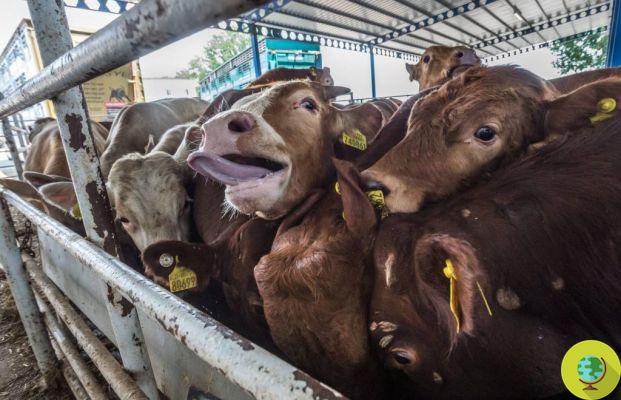
The Anit Commission calls for stricter rules and the installation of cameras on the means to protect animals during transport
He is about to end up run over, his mother saves himThe European standards on transport of animals they are outdated, unclear and too often violated. For some time, numerous animal welfare organizations have denounced the exhausting journeys, which are forced to face every year cows, calves and other specimens exploited and treated as commodities. But now to reiterate this is the report published byscalp, the Commission of Inquiry on the Protection of Animals during Transport which was set up in June 2020 by the European Parliament to investigate alleged violations of EU rules.
With a majority of 30 votes in favor, 0 against and 1 abstention, yesterday ANIT approved its report, calling for the introduction of stricter rules to protect animals. To elaborate the document, the deputies collected (over 18 months) a series of information on the violation of animal welfare - including overcrowding on vehicles, the lack of space, food and water for livestock -, addressing citizens and NGO.
Among the most important innovations is the request for the use of CCTV cameras on means of transport, in particular to document loading and unloading operations. Let's see in detail all the recommendations of the ANIT, which will be examined by the assembly during the Plenary next January.
Read also: Thousands of cattle stuck in the sea for 2 months: hundreds already dead and no one knows the fate of the survivors
Index
The recommendations of the ANIT
Based on the results obtained, the deputies of the ANIT Commission approved a series of important recommendations addressed to the European Commission and the EU Member States.
Closed circuit cameras on vehicles and suitable temperatures
In the ANIT report a very specific request is made, namely the installation of CCTV cameras on means of transport, in particular to ensure greater transparency on loading and unloading operations and to protect operators who respect the rules. Furthermore, the authorities of the various EU countries are required to approve travel plans for animals only if the temperature on the vehicle is between 5ºC and 30ºC and the introduction of devices that also monitor humidity and ammonia levels.
Prohibition of transporting animals that are too young
Another important point on which the ANIT document focuses is the age of the specimens transported. In this regard, the ANIT Commission asks for a ban on the transport of very young animals, of age less than 35 days.
"The transport of unweaned animals older than 35 days should be avoided and allowed only in cases where the journey is less than two hours," they add.
Limits on the export of animals to non-EU countries
"There is no control system in place for the transport of animals to non-EU countries" explain the deputies. To safeguard animal welfare, ANIT members require member states to inspect all shipments to countries outside the European Union to ensure that animals have access to water, food and sufficient space in vehicles. According to the ANIT, the export of live animals should only be approved if it complies with European standards on animal welfare.
Follow us on Telegram | Instagram | Facebook | TikTok | Youtube
Source: ANIT
Read also:
- The odyssey of hundreds of cattle stranded on a ship for two months, without enough water or food
- Billions of animals suffer every day across Europe, but now we have the historic opportunity to change farms
- The UK bans the export of live animals for slaughter


























